H. cleo is IMO one of the easiest of the Mexican Hymenocallises to grow. And it seems to self-pollinate, and if you miss the seeds ripening, they fall off and sprout all on their own wherever they fall. I'm in the Los Angeles area, so I keep it where it gets watered all summer, since it is winter-dormant. I had a small pot of seedlings once that some animal knocked off a small table and I "lost" it among all the larger plants growing on the ground. I discovered it a couple of years later while weeding that area, and the small bulbs, many of them, were still growing leafed out with healthy bulbs in about one inch of soil since most of it got knocked out when it was knocked off the table it was on.
- Welcome to PBS Forum.
This section allows you to view all posts made by this member. Note that you can only see posts made in areas you currently have access to.
#2
Mystery Bulbs / Re: Cabo Mx Moraea looking bulb ID ?
March 07, 2024, 05:18:03 PM
You're probably not still down there, but there is a native bulb, Behria tenuiflora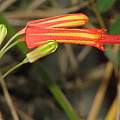 , that grows all over the place around the Cabo area from sea level up into the mountains. They probably don't plant them at the resorts, but I've heard from several people who've driven around there that they're not rare and have often found seeds of it on plants by the sides of the highways. Here's a map of some places where it has been found.
, that grows all over the place around the Cabo area from sea level up into the mountains. They probably don't plant them at the resorts, but I've heard from several people who've driven around there that they're not rare and have often found seeds of it on plants by the sides of the highways. Here's a map of some places where it has been found.
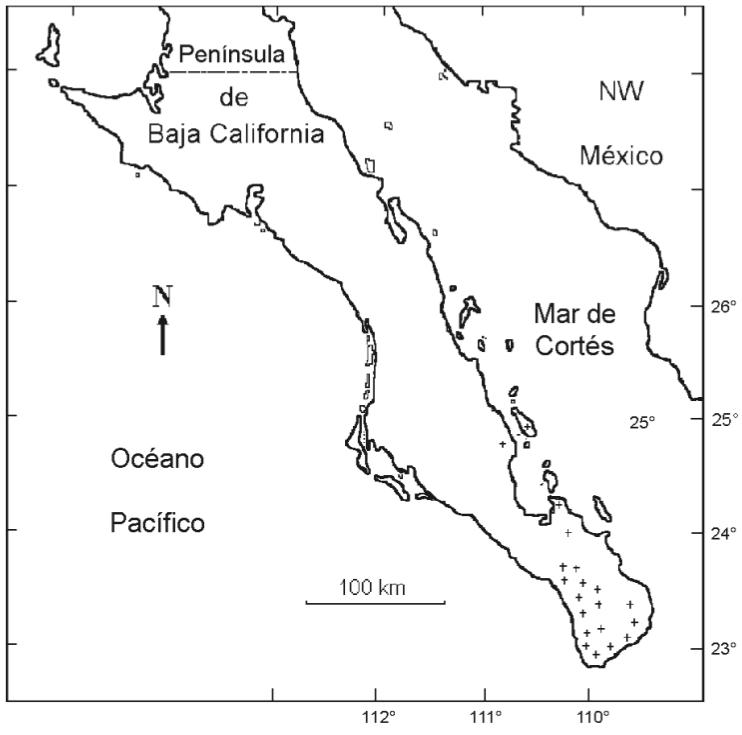

#3
General Discussion / Lumping of Hippeastrum and Zephyranthes
March 01, 2024, 12:20:51 AM
I turned a lot of the lumping in the 2019 paper "Generic classification of Amaryllidaceae tribe Hippeastreae" by García et al. into a cladogram so you can see what they propose based on DNA sequencing. It's actually for the tribe Hippeastreae which has the subtribes of Traubiinae and Hippeastrinae (which is where all the lumping happened, into just the Hippeastrum genus and the Zephyranthes genus). To me the most important classification in the "new" Zephyranthes genus are the subgenera--where all the information about how the Zephyranthes species are grouped is contained (and are closely related to all the old genera that these species used to belong to). I put the subgenus names in brackets. I didn't put in all the species in the Zephyranthes subgenus or the Hippeastrum subgenus because they aren't listed in the paper--and there are about 100 Hippeastrum species in the Hippeastrum subgenus and also about 100 species in the Zephyranthes subgenus. So I just put 'xxx' and 'yyy' to indicate the hundreds of different species. The paper said that there needs to be detailed DNA analysis of those two subgenera as well as the genus Phycella into which the Placea genus was subsumed to figure out how they are all interrelated or subgrouped. Finally, down at the subgenus level, I just stuck all the species in the same final set of branches because the paper didn't really show how they branched or grouped down at the final level. Hippeastreae_tribe.pdf
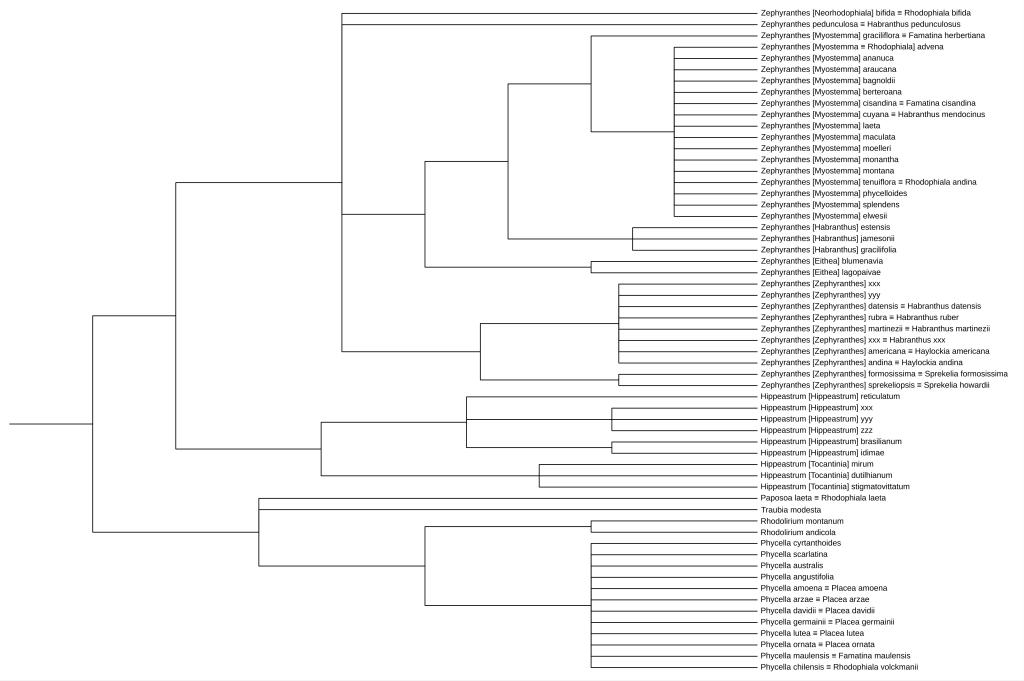
#4
General Discussion / Milla clade in the Brodiaeoideae subfamily (formerly Themidaceae)
February 28, 2024, 12:52:43 AM
Since I have always liked the Milla clade (subsubfamily) of the Brodiaea family, I did some internet searching to try to find out what species were out there, and found more than I bargained for. Here is a summary of what I found.
The Milla clade are the Mexican genera:
Bessera
Dandya
Jaimehintonia
Milla
Petronymphe
The rest of the subfamily are the Western US genera:
Androstephium
Bloomeria
Brodiaea
Dichelostemma
Muilla
Triteleia
Triteleiopsis
In the past 15 years or so, there have been some new species found in this clade and a lot of DNA analysis done, which has necessitated creating a new genus, Xochiquetzallia (since all of the later found Dandya species ended up not being closely related to the first Dandya species that was found), and splitting Bessera elegans into three separate species, and Milla biflora
into three separate species, and Milla biflora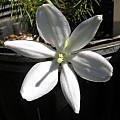 into 7 separate species. (Apparently Milla biflora
into 7 separate species. (Apparently Milla biflora has always been a problem since what was long thought to all be one species was found in a huge variety of climates and locations from the dry areas of southern Arizona all the way down through Mexico and into Guatemala, unlike all the other species in this clade, which are all fairly localized in where they're found. And when they sampled the DNA of various accessions, they kept landing all over the place in the resulting DNA "family trees" (cladograms).) The three color forms of Bessera turned out to be three separate species. (The purple one is B. ramirezii, and I think B. elegantissima is the carmine one.) I tried to put together all the cladograms I could find into one big family cladogram so you could see how they're all related to each other. But some of the papers are very recent and not everything has been DNA tested yet (like the former Milla biflora
has always been a problem since what was long thought to all be one species was found in a huge variety of climates and locations from the dry areas of southern Arizona all the way down through Mexico and into Guatemala, unlike all the other species in this clade, which are all fairly localized in where they're found. And when they sampled the DNA of various accessions, they kept landing all over the place in the resulting DNA "family trees" (cladograms).) The three color forms of Bessera turned out to be three separate species. (The purple one is B. ramirezii, and I think B. elegantissima is the carmine one.) I tried to put together all the cladograms I could find into one big family cladogram so you could see how they're all related to each other. But some of the papers are very recent and not everything has been DNA tested yet (like the former Milla biflora species; I just lumped them all together).
species; I just lumped them all together).
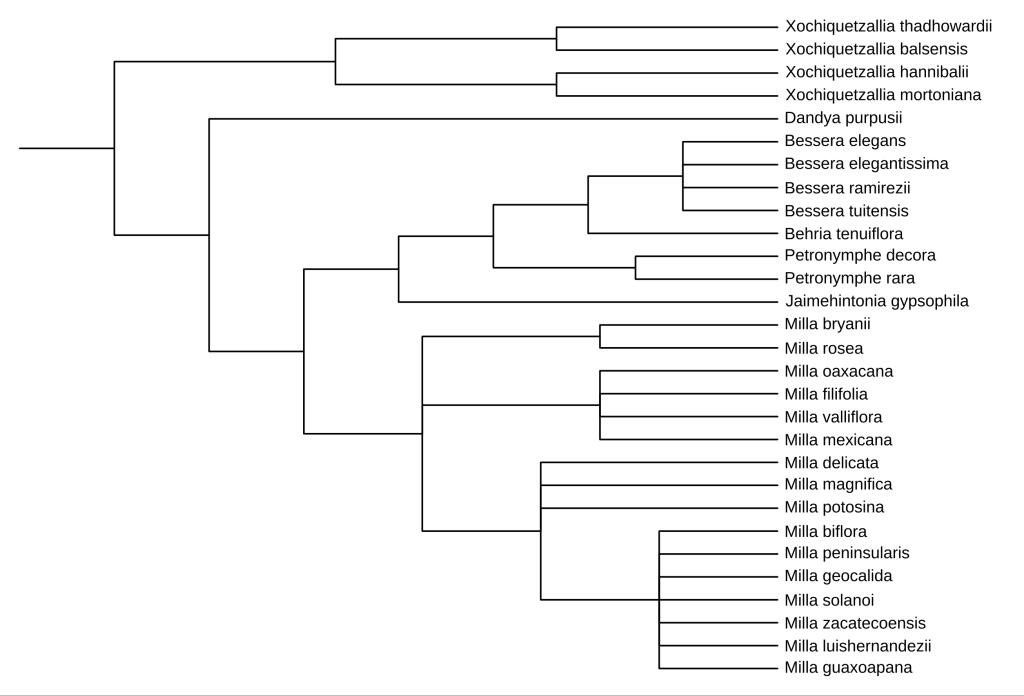
The Milla clade are the Mexican genera:
Bessera
Dandya
Jaimehintonia
Milla
Petronymphe
The rest of the subfamily are the Western US genera:
Androstephium
Bloomeria
Brodiaea
Dichelostemma
Muilla
Triteleia
Triteleiopsis
In the past 15 years or so, there have been some new species found in this clade and a lot of DNA analysis done, which has necessitated creating a new genus, Xochiquetzallia (since all of the later found Dandya species ended up not being closely related to the first Dandya species that was found), and splitting Bessera elegans




#5
General Discussion / Re: Private exchanges
February 26, 2024, 03:31:42 PM
I think this is a great idea, Jane. I would love to participate. I often have an extra bulb or two of something that might be unusual, that isn't really enough to box it up and send it to the BX. Or as you say, if someone has something I really want, and they might be willing to exchange one bulb of it for something I have that I would be willing to exchange one bulb of, that would be very desirable. Some of the things I have, I have maybe three or four of them, which isn't really enough to repot and send the one or two extras to the BX, especially since I always want to keep 2 or 3 in case one suddenly dies or something else transpires that I lose one of them (like a raccoon digging it up or overturning a pot that then sits out in the sun all day while I'm at work!). But I would be willing to give one of them up if I could get something I've been looking for for a long time. The other case I'm guilty of is having a pot full of something that I'm not sure anyone else wants, that they may have been looking for in vain for a long time.
Anyway, I like the idea.
Anyway, I like the idea.
#6
Current Photographs / Re: February 2024
February 26, 2024, 03:20:38 PM
Has anyone figured out a way to grow Hesperocallis undulata in captivity? The seeds germinate very easily and grow just fine the first year. But almost never seem to come out of dormancy the second year except for a very few. And then that's it after they go dormant again. The following year, no sprouts and no bulblets either. I've tried to mimic the kind of soil/sand they grow in. (Maybe I should have stolen some of the sand itself last time I was out there.  ) And one time many years ago, during the IBS era, mature bulbs were offered for sale once when a road construction project dug through a large patch of them and an IBS member was allowed to rescue them and offered them to the membership. I got one, put it in a very well draining medium with coarse sand and pumice and only a little organic matter, planted deeply in the largest tree pot I could obtain (about 20 inches/50 cm tall with a 6 in. × 6 in./15 cm × 15 cm square top), kept it warm and dry all summer and watered it sparingly during the winter. It never sprouted, so I dried the pot out, repotted it and found the bulb was still there and healthy looking. And tried again the next winter. Still no leaves. And later after I dried it out again, I found that the bulb had rotted.
) And one time many years ago, during the IBS era, mature bulbs were offered for sale once when a road construction project dug through a large patch of them and an IBS member was allowed to rescue them and offered them to the membership. I got one, put it in a very well draining medium with coarse sand and pumice and only a little organic matter, planted deeply in the largest tree pot I could obtain (about 20 inches/50 cm tall with a 6 in. × 6 in./15 cm × 15 cm square top), kept it warm and dry all summer and watered it sparingly during the winter. It never sprouted, so I dried the pot out, repotted it and found the bulb was still there and healthy looking. And tried again the next winter. Still no leaves. And later after I dried it out again, I found that the bulb had rotted.
I think I read somewhere a while back that the Theodore Payne Foundation has been trying to grow it in captivity and were getting close to figuring out how to do it. I haven't heard anything since then. Maybe they've figured it out? Maybe Telos could figure it out since they figured out how to grow another different desert bulb, Calochortus kennedyi, in captivity.
 ) And one time many years ago, during the IBS era, mature bulbs were offered for sale once when a road construction project dug through a large patch of them and an IBS member was allowed to rescue them and offered them to the membership. I got one, put it in a very well draining medium with coarse sand and pumice and only a little organic matter, planted deeply in the largest tree pot I could obtain (about 20 inches/50 cm tall with a 6 in. × 6 in./15 cm × 15 cm square top), kept it warm and dry all summer and watered it sparingly during the winter. It never sprouted, so I dried the pot out, repotted it and found the bulb was still there and healthy looking. And tried again the next winter. Still no leaves. And later after I dried it out again, I found that the bulb had rotted.
) And one time many years ago, during the IBS era, mature bulbs were offered for sale once when a road construction project dug through a large patch of them and an IBS member was allowed to rescue them and offered them to the membership. I got one, put it in a very well draining medium with coarse sand and pumice and only a little organic matter, planted deeply in the largest tree pot I could obtain (about 20 inches/50 cm tall with a 6 in. × 6 in./15 cm × 15 cm square top), kept it warm and dry all summer and watered it sparingly during the winter. It never sprouted, so I dried the pot out, repotted it and found the bulb was still there and healthy looking. And tried again the next winter. Still no leaves. And later after I dried it out again, I found that the bulb had rotted.I think I read somewhere a while back that the Theodore Payne Foundation has been trying to grow it in captivity and were getting close to figuring out how to do it. I haven't heard anything since then. Maybe they've figured it out? Maybe Telos could figure it out since they figured out how to grow another different desert bulb, Calochortus kennedyi, in captivity.
#7
General Discussion / Re: Visit to Uli Urban's garden
February 22, 2024, 06:02:36 PM
So Uli. If I make it to Portugal, you'll let me see your garden?! Cool!
#8
General Discussion / Re: Telos rare bulbs purchases
February 22, 2024, 06:00:26 PM
Yes, Diana (Telos Bulbs owner) told me that when things are in growth, they are listed as out of stock on the website. So winter growers are all out of stock right now (except for some of the Amaryllis family bulbs as Robert mentioned). They're dormant in the (northern) summer, so that's when you can order them. Summer growers are dormant now, so whatever Telos still has stock of can be ordered now. Although it's better to check earlier during each dormant season before that season's stock sells out.
And her bulbs are top notch. Plus she has this uncanny ability to sell stock of things that often are found nowhere else.
And her bulbs are top notch. Plus she has this uncanny ability to sell stock of things that often are found nowhere else.
#9
Current Photographs / Re: February 2024
February 15, 2024, 03:40:53 PM
I've grown 'Alberto Castillo' along with a number of other cultivars of Ipheion uniflorum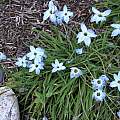 for years, including a white flowered one I got from England many years ago. And 'Alberto Castillo' is noticeably different than all of the others. It's the most vigorous. It has those distinctly more bluish green leaves. And it almost looks like it's a hybrid with some other species, or at least a different subspecies. I agree that the seeding around produces lots of interesting color variations. But at least in this area (inland southern California), the various cultivars never change that drastically in coloration from year to year.
for years, including a white flowered one I got from England many years ago. And 'Alberto Castillo' is noticeably different than all of the others. It's the most vigorous. It has those distinctly more bluish green leaves. And it almost looks like it's a hybrid with some other species, or at least a different subspecies. I agree that the seeding around produces lots of interesting color variations. But at least in this area (inland southern California), the various cultivars never change that drastically in coloration from year to year.

#10
Current Photographs / Re: February 2024
February 14, 2024, 10:06:38 PM
You can see a hint of blue in the petals. Alberto Castillo is pure white without a hint of blue. Also the leaves of Alberto Castillo are slightly-bluish green. This doesn't look like Alberto Castillo to me.
#11
General Plants and Gardening / Re: GMO seeds now offered to US Home Gardeners. Would you?
February 12, 2024, 08:17:32 PM
The Bayer-Monsanto method IMO is capitalism gone off a cliff. I especially abhor the food crops they have genetically altered so that the seeds they produce will not germinate (so you have to buy seeds new from them every year--I think they called the gene the Terminator gene). Then there is another type of genetic manipulation where along with a GMO gene that increases production two-fold or some other benefit, they link another, spliced-in gene that requires a synthetic compound in order to express the two-fold production gene. They then sell fertilizer that has the synthetic compound included in it. So in order to get the doubled production, you also have to, you guessed it, buy your fertilizer from them too. It reminds me of the accusation that some corporations would love to copyright or trademark air if they could, so that everyone would have to pay them for the air that we breathe. (And I'm not anti capitalism. But sometimes some corporations carry things too far IMO.)
Did some googling. I wasn't misremembering it. But apparently Monsanto has temporarily suspended further research into the terminator genetics because of bad world publicity. (You think?)
<https://www.theguardian.com/science/1999/oct/05/gm.food1>
But this article mentioned the other technology I was talking about. That was harder to find but it turns out the concept (and research) is real. It's called genetic use restriction technology or GURT. And the terminator gene is one of two varieties of GURT, V-GURT. T-GURT is the second type I described above. And there is a wikipedia article all about it.
<https://en.wikipedia.org/wiki/Genetic_use_restriction_technology>
Did some googling. I wasn't misremembering it. But apparently Monsanto has temporarily suspended further research into the terminator genetics because of bad world publicity. (You think?)
<https://www.theguardian.com/science/1999/oct/05/gm.food1>
But this article mentioned the other technology I was talking about. That was harder to find but it turns out the concept (and research) is real. It's called genetic use restriction technology or GURT. And the terminator gene is one of two varieties of GURT, V-GURT. T-GURT is the second type I described above. And there is a wikipedia article all about it.
<https://en.wikipedia.org/wiki/Genetic_use_restriction_technology>
#12
Mystery Bulbs / Re: Clinanthus "bicolor"
January 24, 2024, 01:25:08 PM
Alan Meerow, who is the expert on Andean amaryllids, has said that he thinks it most likely is a new species of Clinanthus.
I may be mixing it up with another Andean amaryllid posted on Facebook, but I thought Viveroscar said a friend was going to publish this as a new species sometime in the future.
(And of course I would love to get seeds of it!)
I may be mixing it up with another Andean amaryllid posted on Facebook, but I thought Viveroscar said a friend was going to publish this as a new species sometime in the future.
(And of course I would love to get seeds of it!)
#13
General Discussion / Re: Lycoris sprengeri bulbs
January 20, 2024, 12:17:16 AM
I'm over in the San Gabriel Valley and I have a couple of 10 year old pots of Lycoris sprengeri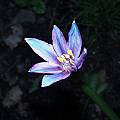 , and they are only just now barely starting to put up leaves even though most of the other Lycoris species I have are in full leaf. So I would plant your bulbs now. They'll have plenty of time to grow and replenish your bulbs. I don't think they go dormant here until June. But the smallest pot you should put them in is a 2 gallon pot. They love lots of room for root growth.
, and they are only just now barely starting to put up leaves even though most of the other Lycoris species I have are in full leaf. So I would plant your bulbs now. They'll have plenty of time to grow and replenish your bulbs. I don't think they go dormant here until June. But the smallest pot you should put them in is a 2 gallon pot. They love lots of room for root growth.
There is another guy here in L.A. County somewhere who has grown Lycoris for many years and wrote an article on Lycoris in one of the last issues of the IBS journal. He has been on PBS before but I don't know if he still is. He can give you much better information about growing them in this area.

There is another guy here in L.A. County somewhere who has grown Lycoris for many years and wrote an article on Lycoris in one of the last issues of the IBS journal. He has been on PBS before but I don't know if he still is. He can give you much better information about growing them in this area.
#14
Current Photographs / Re: January 2024
January 16, 2024, 08:11:20 PM
A couple of things that have bloomed this month (plus one I won't post a picture of because it's one lone flower and it's really early for me: Tecophilaea cyanocrocus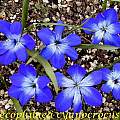 , which I posted pots full last year).
, which I posted pots full last year).
My first Paramongaia weberbaueri of the season. These flowers are big. The first photo, just the part that is yellow, is about the length of the palm of my hand to the tip of my middle finger.
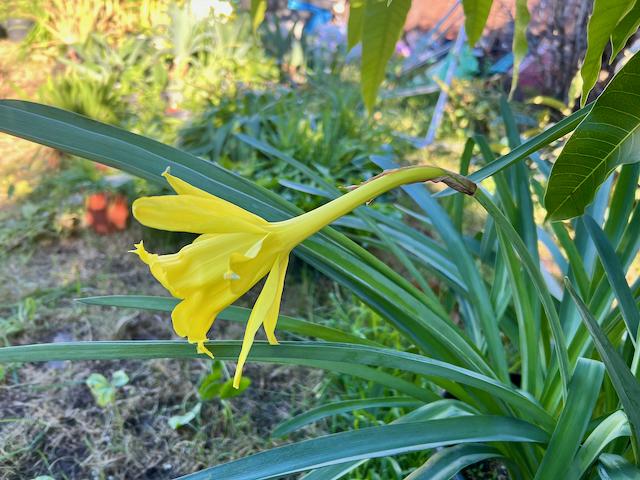
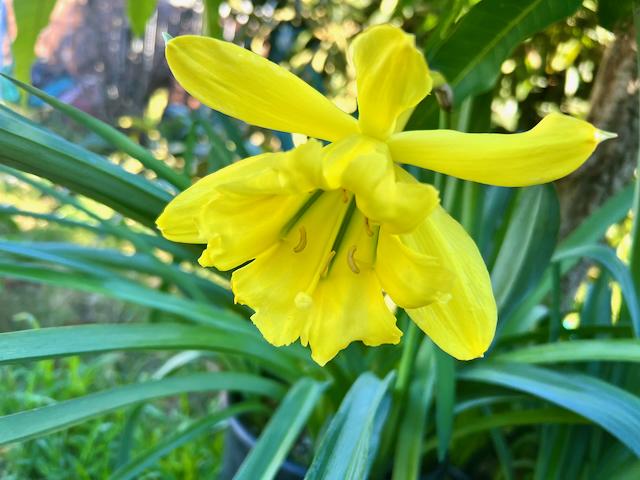
And a rebloom since I got it last summer, so I've kept it alive! Anigozanthos 'Masquerade' (kangaroo paw). The flowers of my pot of Lachenalia viridiflora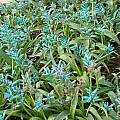 have already faded, so I can't take a side by side comparison photo of both of them. And Ixia viridiflora
have already faded, so I can't take a side by side comparison photo of both of them. And Ixia viridiflora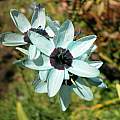 isn't anywhere close to blooming yet. (I suppose I could go over to the Huntington to see if either of the teal Puyas are in bloom yet (P. alpestris and P. berteroniana). I don't suppose that their Jade Vine (Strongylodon macrobotrys) in the big greenhouse is in bloom right now. And I've never seen in person Oron Peri's beautiful hybrid creation of Iris palaestina × I. postii <https://seedsofpeace.info/product/iris-palaestina-x-i-postii/>.
isn't anywhere close to blooming yet. (I suppose I could go over to the Huntington to see if either of the teal Puyas are in bloom yet (P. alpestris and P. berteroniana). I don't suppose that their Jade Vine (Strongylodon macrobotrys) in the big greenhouse is in bloom right now. And I've never seen in person Oron Peri's beautiful hybrid creation of Iris palaestina × I. postii <https://seedsofpeace.info/product/iris-palaestina-x-i-postii/>.
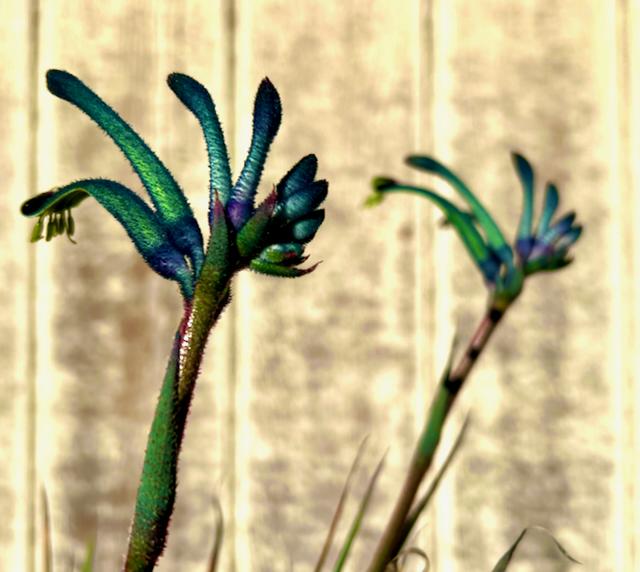
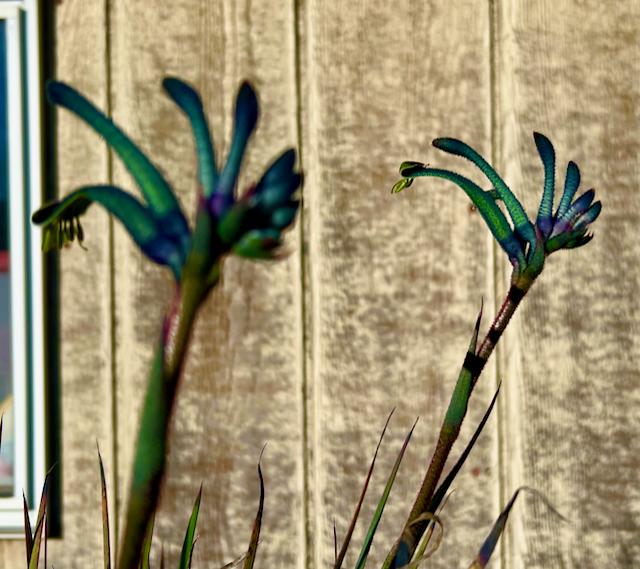

My first Paramongaia weberbaueri of the season. These flowers are big. The first photo, just the part that is yellow, is about the length of the palm of my hand to the tip of my middle finger.
And a rebloom since I got it last summer, so I've kept it alive! Anigozanthos 'Masquerade' (kangaroo paw). The flowers of my pot of Lachenalia viridiflora


#15
General Discussion / Re: Paramongaia weberbaueri - Bimodal Climate Preferences?
December 19, 2023, 03:02:13 PM
Thanks for all the good information and article reference, Carlos. Lima is not hot and it does not rain very much. The landscape looks quite dry. I tried to go to the beach when I was there years ago in February because lots of families were there, but it was too cool for me. Reminded me of trying to go to the beach in the summer in New Zealand. I think I read somewhere that when Ismene amancaes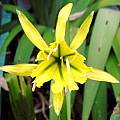 grow and bloom is the same time that it is very foggy in the coastal hills around Lima. But not much rain, as you saw in the climate chart you linked to. In fact, that same page shows that the smallest number of hours of sun is in June which is when amancaes start to flower.
grow and bloom is the same time that it is very foggy in the coastal hills around Lima. But not much rain, as you saw in the climate chart you linked to. In fact, that same page shows that the smallest number of hours of sun is in June which is when amancaes start to flower.
As for it possibly being a Paramongaia, other than both having yellow flowers, they are very different from each other. Paramongaia flowers look like giant daffodils/narcissus with a large "cup" or corona and a separate perianth. I. amancaes don't look like daffodils at all. The "cup" is large and almost flat, and the "perianth" is just several very narrow petals. They are very much like a lot of the white Ismene or Hymenocallis, only yellow. The color of amancaes is a very saturated yellow almost like a melted yellow crayon. Paramongaia flowers are just a "normal" amount of yellow. And the leaves of amancaes are soft and tear easily while the leaves of Paramongaia are glaucous (a little bluish in color) and much more stiff. (I'm not a botanist, so I'm just trying to describe what I've seen.) Also, amancaes only grows for about 4 months and is dormant for maybe 8 months while Paramongaia grows for more than 6 months and is dormant for less than 6 months.
I think your climate in Valencia is fairly similar to Uli's climate in Portugal or my climate in southern California. So for you Paramongaia should grow just fine outside all winter. They do like to have plenty of sunshine. But I keep mine at the edge of a tree canopy or the edge of some shade cloth. The explanation is that they get full sunshine there because the elevation of the sun is so low in winter. But the sky directly above them is blocked. Because I have experienced several times when there is very chilly weather and there are zero clouds at night, when the conditions are perfect to have a radiation frost, if the Paramongaia plant is exposed directly above to a cold black sky, the leaves will get burned and some will even die, even if the temperature doesn't go below 0°C. It doesn't kill the plant, but then there are fewer leaves for photosynthesis.

As for it possibly being a Paramongaia, other than both having yellow flowers, they are very different from each other. Paramongaia flowers look like giant daffodils/narcissus with a large "cup" or corona and a separate perianth. I. amancaes don't look like daffodils at all. The "cup" is large and almost flat, and the "perianth" is just several very narrow petals. They are very much like a lot of the white Ismene or Hymenocallis, only yellow. The color of amancaes is a very saturated yellow almost like a melted yellow crayon. Paramongaia flowers are just a "normal" amount of yellow. And the leaves of amancaes are soft and tear easily while the leaves of Paramongaia are glaucous (a little bluish in color) and much more stiff. (I'm not a botanist, so I'm just trying to describe what I've seen.) Also, amancaes only grows for about 4 months and is dormant for maybe 8 months while Paramongaia grows for more than 6 months and is dormant for less than 6 months.
I think your climate in Valencia is fairly similar to Uli's climate in Portugal or my climate in southern California. So for you Paramongaia should grow just fine outside all winter. They do like to have plenty of sunshine. But I keep mine at the edge of a tree canopy or the edge of some shade cloth. The explanation is that they get full sunshine there because the elevation of the sun is so low in winter. But the sky directly above them is blocked. Because I have experienced several times when there is very chilly weather and there are zero clouds at night, when the conditions are perfect to have a radiation frost, if the Paramongaia plant is exposed directly above to a cold black sky, the leaves will get burned and some will even die, even if the temperature doesn't go below 0°C. It doesn't kill the plant, but then there are fewer leaves for photosynthesis.
